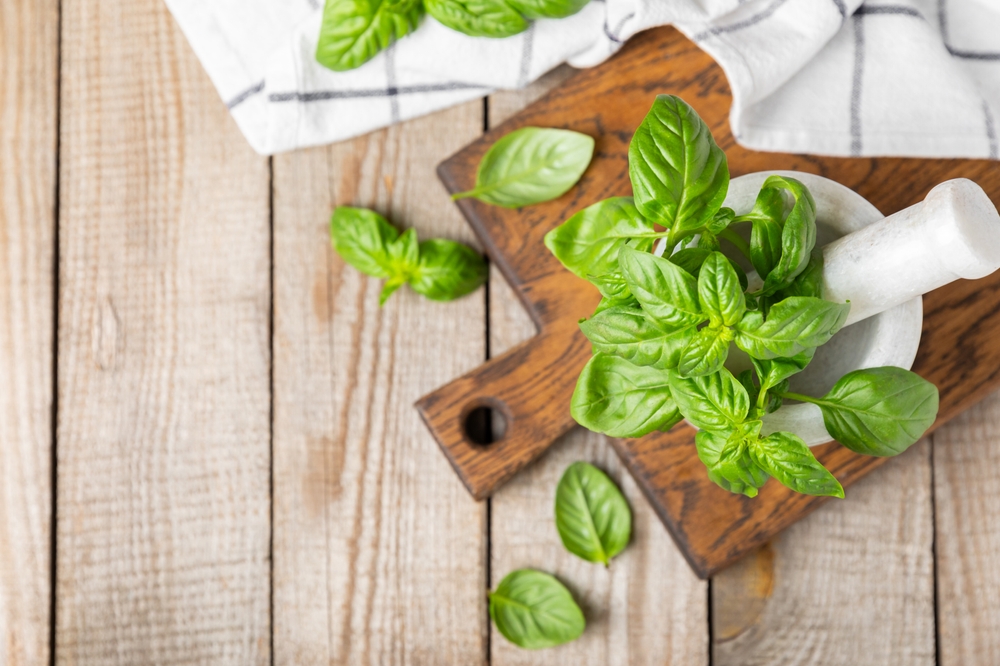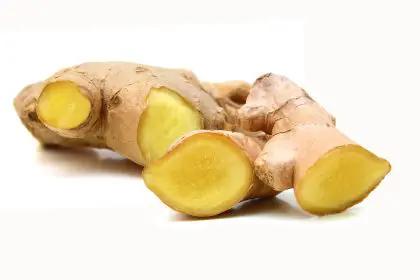That burning sensation creeping up your throat after a meal. The uncomfortable pressure building behind your sternum. The sour taste that suddenly appears in your mouth. If you’re one of the millions who battle acid reflux, you know these unwelcome sensations all too well.
While the pharmacy shelves are stocked with colorful bottles promising relief, there’s a simple green leaf that might work faster and more effectively than those chalky tablets. And chances are, you’ve walked right past it in the grocery store without a second glance.
Nature’s antacid hiding in plain sight
Basil isn’t just for spicing up your pasta sauce or making pesto. This aromatic herb packs a powerful punch against acid reflux that can kick in within minutes of chewing its fresh leaves.
The magic of basil lies in its unique combination of compounds that work together to soothe your digestive system from top to bottom. While most conventional antacids simply neutralize stomach acid after it’s already causing problems, basil takes a more comprehensive approach.
When you chew fresh basil leaves, you release volatile oils that contain eugenol, a natural anti-inflammatory that immediately begins calming irritated tissues in your esophagus. This provides that quick relief you’re desperately seeking when acid reflux strikes. But basil doesn’t stop there.
The herb also stimulates your digestive system to function more efficiently, addressing one of the root causes of reflux. Many reflux sufferers actually have sluggish digestion that allows food to sit in the stomach too long, increasing pressure and pushing stomach contents back up where they don’t belong.
The instant relief protocol
When acid reflux ambushes you after a meal, reaching for fresh basil leaves could be your fastest path to comfort. The protocol is surprisingly simple: take 4-5 fresh basil leaves, wash them thoroughly, and chew them slowly for about 30 seconds.
Don’t just gulp them down. The key is to chew thoroughly, allowing the plant’s beneficial compounds to be released and absorbed through the tissues in your mouth. This provides a two-phase relief system. First, the direct contact of the herb’s oils with your irritated throat tissues offers immediate soothing. Second, as you swallow, basil’s digestive-enhancing compounds go to work on the underlying causes of your discomfort.
Many reflux sufferers report noticeable relief within 5-10 minutes, with the effects often lasting longer than over-the-counter options. The beauty of this approach lies in its simplicity and accessibility. No measuring, mixing, or timing required. Just chew and find relief.
The science behind the leaf
While folk medicine has utilized basil for digestive troubles for centuries, modern research is finally catching up to explain why it works so effectively.
Basil contains a complex array of plant compounds that work synergistically to calm your digestive system. Beyond the anti-inflammatory eugenol already mentioned, basil contains rosmarinic acid, another powerful anti-inflammatory that helps reduce tissue irritation throughout the digestive tract.
The herb also boasts significant quantities of magnesium, a mineral that helps relax the lower esophageal sphincter into its proper tone. This muscle is the gateway between your esophagus and stomach, and its proper function is crucial for preventing reflux. When it’s too tight, food has trouble moving down. When it’s too loose, stomach contents can splash back up.
Perhaps most intriguing is basil’s effect on your vagus nerve, the superhighway of communication between your brain and digestive system. The aromatic compounds in basil appear to stimulate this nerve, helping orchestrate more harmonious digestive function from top to bottom.
Not all basil is created equal
If you’re ready to try this natural acid reflux remedy, the type of basil you choose matters. For fastest relief, sweet basil is your best option. This is the common variety found in supermarkets and farmers markets, with bright green rounded leaves and that distinctive sweet-spicy aroma.
Thai basil, with its purple stems and anise-like flavor, contains different compound ratios and while still beneficial, doesn’t work quite as quickly for reflux relief. Holy basil, also called tulsi, is powerful for long-term digestive health but doesn’t provide the same immediate soothing effect as sweet basil.
Freshness is crucial too. Those sad, wilted herbs in plastic containers that have been sitting on store shelves for days have lost much of their volatile oils and won’t provide the same relief as recently harvested leaves. Your best options are growing your own basil plant on a sunny windowsill or purchasing living plants from the produce section.
Beyond the quick fix
While chewing basil leaves provides impressive on-the-spot relief, incorporating this herb into your regular routine might help prevent acid reflux before it starts.
Adding fresh basil to your meals does more than enhance flavor. The active compounds help your body process food more efficiently, potentially preventing the digestive slowdowns that contribute to reflux. Basil is particularly effective when paired with foods that typically trigger reflux, like tomato-based dishes or fatty meals.
Some reflux sufferers swear by starting their day with a few fresh basil leaves or ending meals with this natural digestive aid. Others keep a small potted basil plant at work for quick relief during stressful days, as anxiety and stress are well-known reflux triggers.
The real beauty of basil is that unlike many medications for acid reflux, using it regularly doesn’t come with diminishing returns or rebound effects. In fact, consistent use often improves overall digestive function over time.
When basil meets modern medicine
If you’re already taking medications for acid reflux, adding basil to your regimen is generally safe, but timing matters. For those on prescription PPIs or H2 blockers, basil can be a complementary approach, not a replacement. These medications alter your digestive chemistry in specific ways, and basil works alongside them without interference when used appropriately.
However, if you’re using antacids like Tums or Rolaids, it’s best to separate them from your basil consumption by at least 30 minutes. The alkalizing compounds in these medications might diminish some of basil’s active components.
For anyone with severe or chronic reflux, basil offers welcome relief but shouldn’t replace proper medical care. Persistent reflux can indicate underlying issues that need assessment, and conditions like Barrett’s esophagus require monitoring regardless of symptom management.
Growing your own reflux remedy
Perhaps the most sustainable approach to harnessing basil’s reflux-fighting power is growing your own supply. Basil is remarkably easy to cultivate, even for those without a green thumb.
A sunny window, well-draining soil, and regular watering are all this generous plant requires. A single plant can provide months of fresh leaves for pennies compared to over-the-counter reflux remedies.
Growing your own also ensures you’ll have the freshest leaves possible, which contain the highest levels of those beneficial volatile oils that fight reflux. The convenience of plucking a few leaves whenever heartburn strikes makes this approach particularly practical.
For those in colder climates, basil grows happily indoors year-round with sufficient light. It can be started easily from seeds or purchased as small plants that quickly flourish with minimal care.
Nature often provides remedies right under our noses, and basil is a perfect example of accessible, effective relief hiding in plain sight. The next time acid reflux flares, perhaps the solution isn’t in your medicine cabinet but in your herb garden or produce drawer.
















